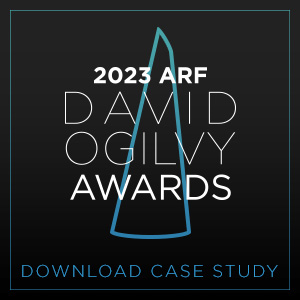- Past Event Highlights
- Article
Augmented Reality – Unlock New Technology to Drive Brand Growth
Aarti Bhaskaran – Global Head of Research & Insights, Snap
Kara Louis – Group Research Manager, Snap
Aarti Bhaskaran and Kara Louis of Snap presented their amalgamation of work on augmented reality (AR) with key data and client case studies from the last two years. Showcasing the growth of the AR landscape, Aarti and Kara featured how consumers are gravitating towards AR and the expanding number of opportunities available for advertisers in reaching new audiences and utilizing within the media mix. Case studies include brands using AR try-on technology from Champs Sports and Clearly eyeglasses. Key takeaways:- AR usage is widespread and growing, from Boomers to GenZ. By the year 2025 there will be approximately 4.3 billion AR users across all generations.
- Almost all marketers (91%) think consumers use AR for fun, but 67% of consumers prefer using AR for shopping over fun (53%).
- Interacting with products that have AR experiences leads to a 94% higher purchase conversion rate, as individuals can better assess them and feel connected with brands. Certain AR applications can substitute physical shopping with different features varying across the customer journey.
- Interactive and personalized shopping experiences reach Gen Z—92% are interested in using AR for shopping, with over half of Gen Z saying they’d be more likely to pay attention to ads using AR. Gen Zs are also twice as likely to buy items that they have experienced first using AR than those who don’t.
- AR lenses on Snapchat outperformed all other media formats. Other platforms would need 14-20 ads to generate the same level of attention as Snapchat lenses.
- AR not only drives short-term impact with higher purchase intent and brand preference, but it also improves brand opinion, influences implicit associations and increases likelihood to purchase and recommend.
- The creative attributes that include logo and product branding, complexity, messaging and user experience show a significant relationship with AR performance in brand lift.




